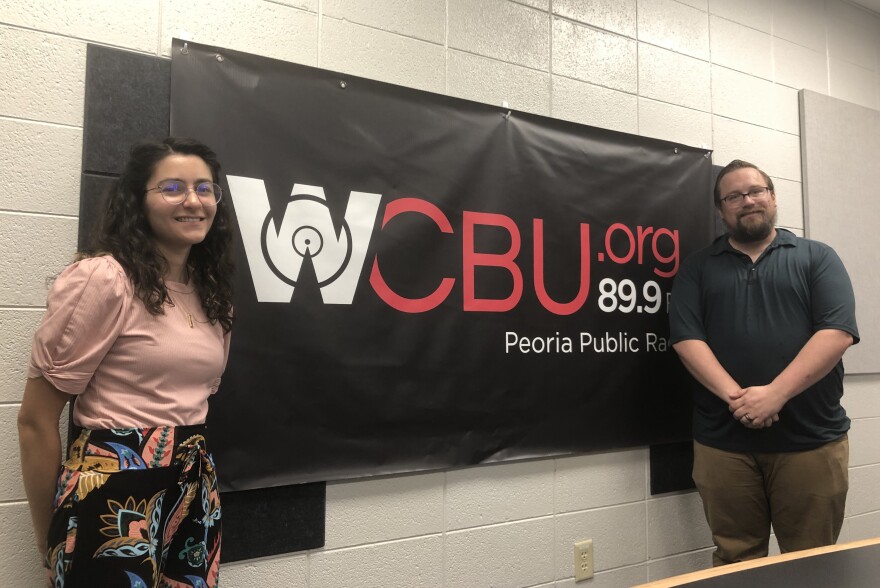The Tri-County Regional Planning Commission is finishing a lengthy, federally funded process to develop a broad plan for roadway safety with an ambitious goal over the next quarter century.
Michael Bruner, a TCRPC senior planner, says the “Vision Zero” concept behind the Comprehensive Safety Action Plan aims to eliminate all traffic fatalities and severe injuries by 2050, in conjunction with a U.S. Department of Transportation strategy.
“We didn’t just adopt a plan to sit on a shelf, right? We adopt a plan that we want to implement and save lives, because one death is one too many,” said Bruner, noting the commission received a $400,000 grant through the 2021 bipartisan infrastructure bill to put toward the project as part of the Safe Streets and Roads For All program.
“In that program, there’s two components of it. There is a planning component, and then there’s actual implementation and building component. And to be eligible to receive an implementation grant, you have to have a plan. … That allows all the jurisdictions within the Tri-County region to apply for this infrastructure implementation funding, which there is a current grant cycle open right now.”
Reema Abi-Akar, another senior planner with the TCRPC, said traffic crash data analysis that went into developing the action plan highlights the need to improve traffic safety.
“In terms of the national crash levels, the trends are unfortunately going the wrong way, meaning that there are more serious injuries and fatalities on the roads today,” said Abi-Akar. “So it’s true that we are working on this plan to identify projects for a grant application, but broadly we hope to really end up bringing down those numbers because nobody wants to see such high crash levels.”
Last Thursday, the TCRPC held the second of two public open houses on the safety action plan after an initial gathering in February. Abi-Akar said during development of the plan, more than 400 people responded to an online traffic safety analysis survey.
“People told us anything from ‘this is dangerous left turn’ to ‘here is an area that should have a sidewalk that does not’ to ‘I want to be able to ride my bike here, but I don’t feel safe.’ So there’s a wide variety,” she said.
“So not only did we use crash data that was available, but we asked people to give their own experiences. That’s very useful and why we have all of this public input, because the data can only show so much, and our lived experiences really tap into it.”
Abi-Akar said numerous points of analysis are taken into consideration in developing the safety action plan.
“At the core level, we look at the crashes that are happening – how many and where and the severity,” she said. “We also include factors, such as poverty level, that could impact how crucial it is to improve in that specific region.
“Ultimately, the goal is really to lower those crash numbers and specifically use federal dollars in the most effective way that we can.”
Bruner said the planning commission was able to use its data inventory of traffic accidents in Peoria, Tazewell and Woodford counties to build a “heat map” showing a high-injury network where accidents are more likely.
“We looked at the different characteristics of those roadways to see, ‘why are these accidents happening here?’ We found the typical characteristics for those types of roadways, and then we developed a risk analysis that looked at all the roadways in the Tri-County region that meet those criteria,” he said.

Bruner said the project website includes an interactive mapping dashboard that shows where crashes are frequent across the Tri-County. It also has a “safety tool kit” that jurisdictions can access to see possible countermeasures that can be used to reduce traffic crashes.
“Also, our consultant has developed a cost-benefit analysis Excel sheet that all the communities in our region will be able to use to help understand what the cost benefit is of the actual improvement,” said Bruner. “A lot of times these federal and state grant applications require a cost-benefit analysis, which can be a pretty daunting task.
“So we already have an Excel sheet that is built for these safety projects that any municipality can basically just pick the different options that they want to do, and so it’s going to tell what the benefit of it is, and they can just easily add that into the grant application.”
The planning commission’s board voted to adopt the plan as drafted at its meeting Wednesday.
“All the planning work has been done. All the data has been gathered, all the analysis has been completed. It’s just packaging it all together for the final product so the public can actually view it,” said Bruner. “We have it, right now, available in the draft format. It’s not all buttoned up completely, but at the end of the month a complete, final package will be available on our website to view.”


